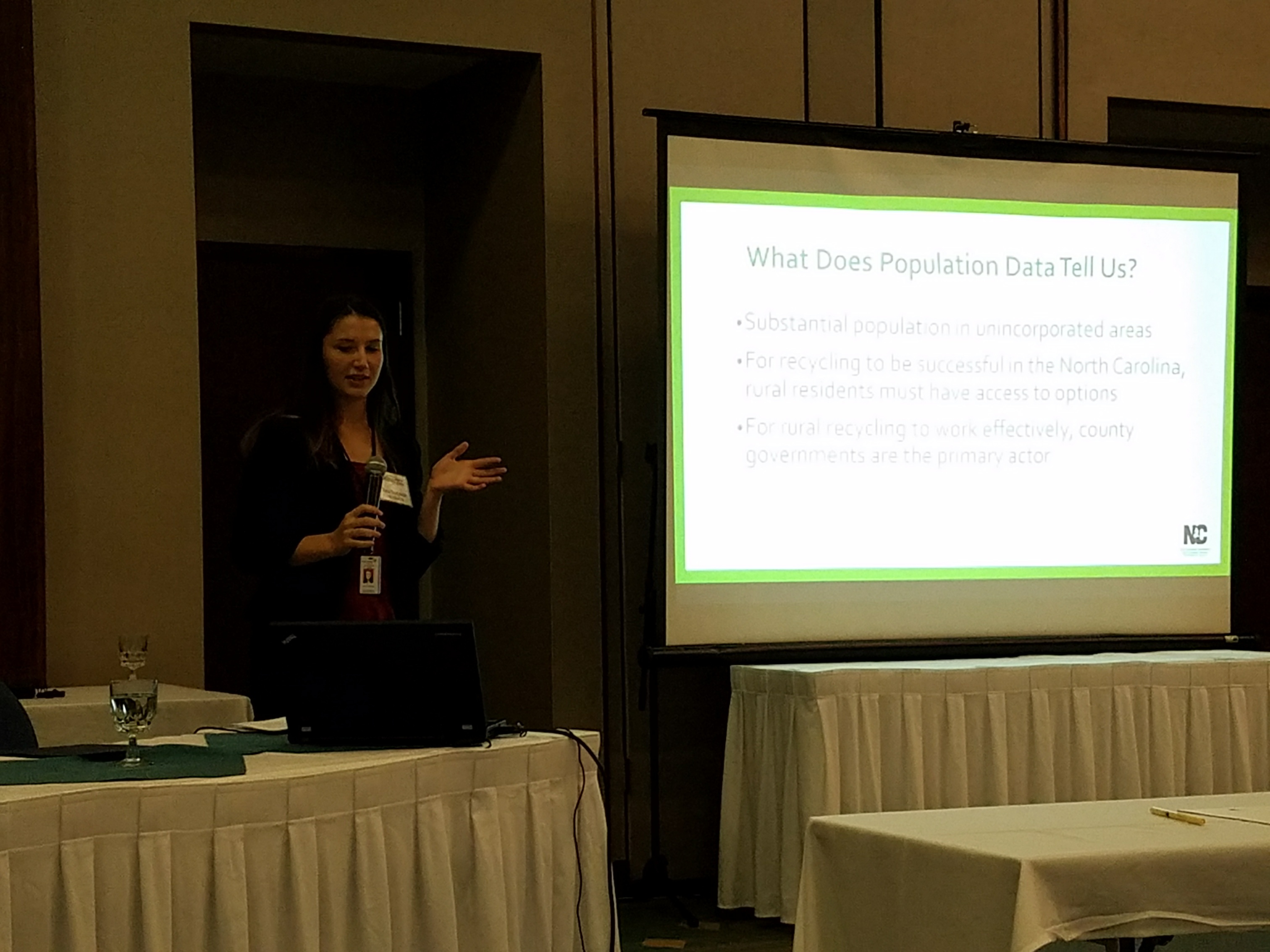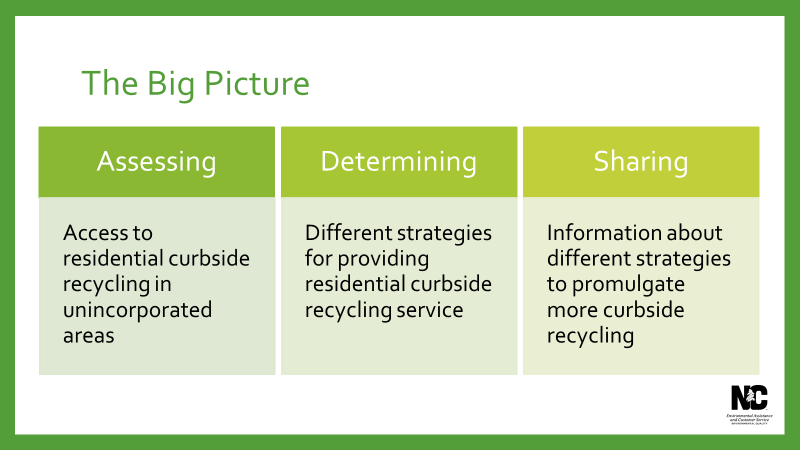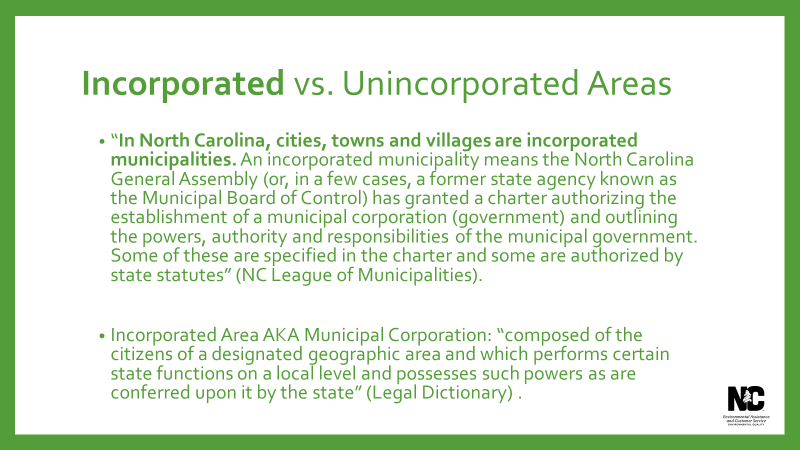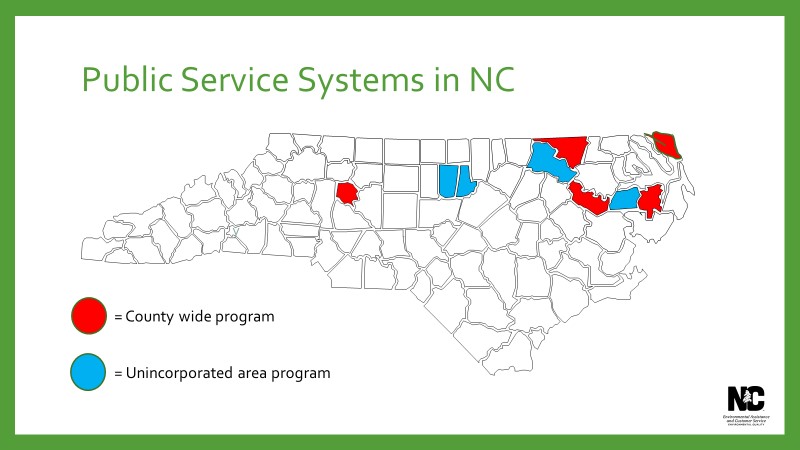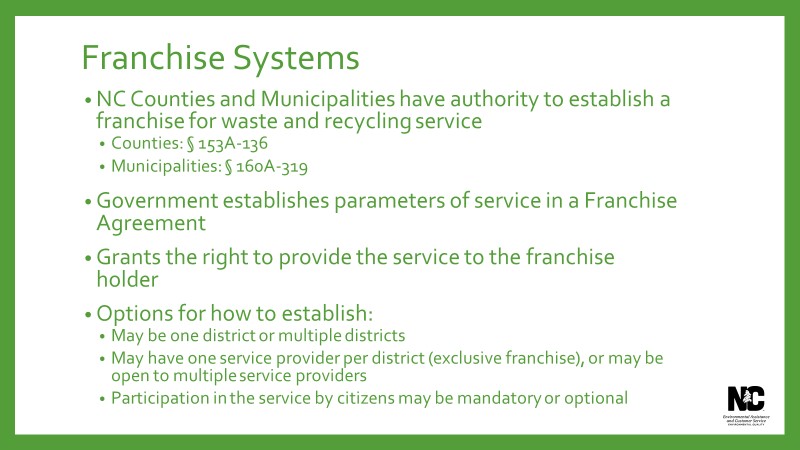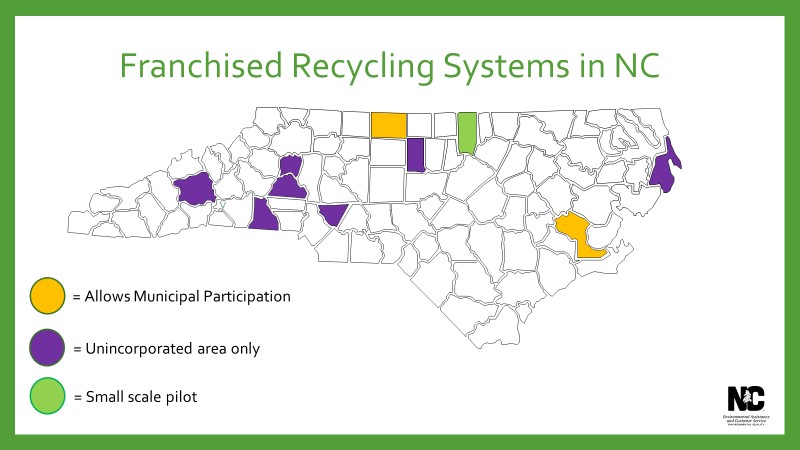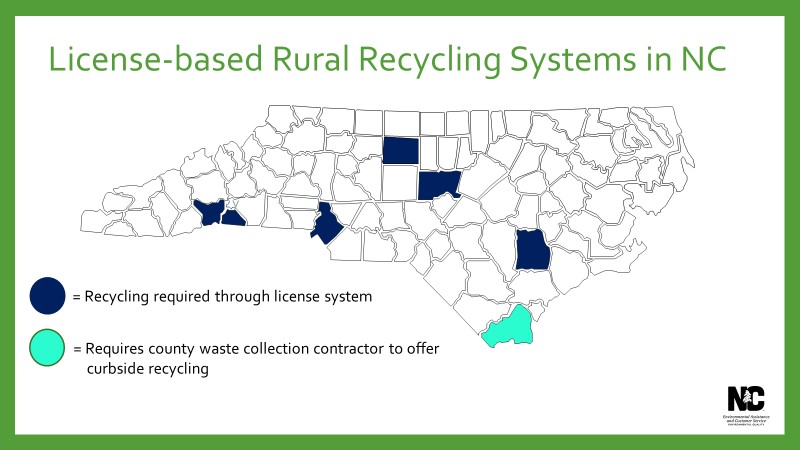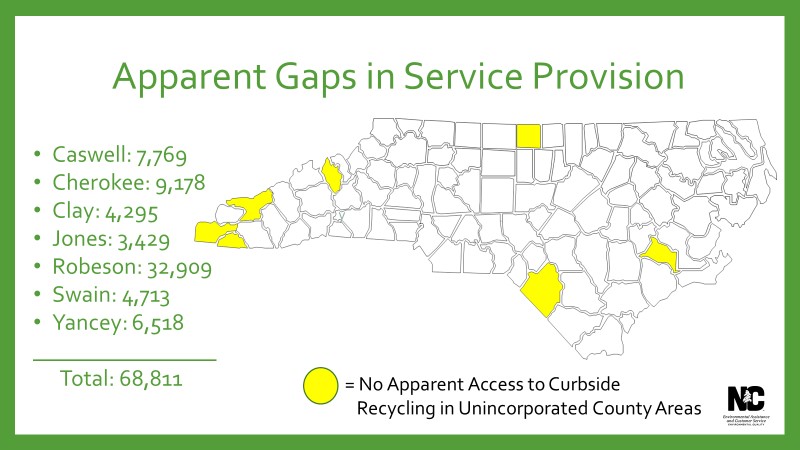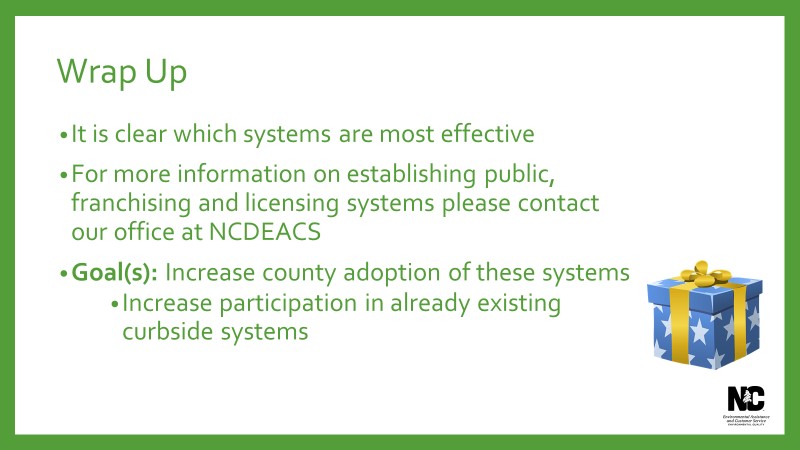So—
It’s my last full time week at the NCDEQ and I have mixed feelings. The summer has flown by, faster than I ever could have anticipated, and I’ve learned so much here and finally have gotten used to the full time 8 hour day, 5 day a week schedule….just in time to go back to school and break out of that cycle. As you know if you’ve been reading these blog posts, my overarching project this summer has dealt with unincorporated area access to curbside recycling. That project is coming under wraps- although albeit still missing a few pieces. However, I presented my findings at this year’s NC APWA Solid Waste Chapter Conference in Atlantic Beach, NC this past Thursday.
In the simplest terms, the presentation centered around who has access to curbside recycling and who is missing it. Additionally, the presentation outlined the different ways that counties can implement unincorporated area curbside recycling programs for their residents and encouraged them to implement these. I’m going to feature a few of my slide decks below to give you the concise version of what I talked about at the NC APWA event.
I’ve talked about this a little before but there are four main types of systems a county can have when implementing unincorporated area residential curbside recycling:
1. Public Service (County Operated)
2. Franchise
3. License
4. Open/Laissez Faire
These are listed in terms of efficiency and effectiveness. The case for curbside recycling in rural areas can be made by the fact that provision of this service can increase diversion rates which means decreased public disposal costs at landfills. Additionally, curbside service can take some pressure off of drop off locations (convenience sites) which means there is less of a need to construct additional convenience sites, saving counties these costs.
If you’re still confused about the meaning between incorporated vs. unincorporated areas in North Carolina this is what the NC League of Municipalities defines as an incorporated area in the slide on the left.
Unincorporated areas are those not covered by any local government contract. They are typically rural areas.
1. Public Service (County Operated Systems):
The counties highlighted in the map to the left are: Davie, Orange, Durham, Halifax, Northampton, Martin, Washington, Tyrrell, and Currituck.
A typical public subscription program, or an open system program, generally gets a participation rate around 20 percent. You can see in the slide above how much higher the participation rate is in Durham’s county program (80 percent). Additionally, a good recycling program should be taking in around 400 pounds of recyclables per household per year. You can see that Durham’s system is almost there. I should point out that the served column means the number of households with access to curbside service, even if they choose not to participate in the program.
2. Franchise Systems
Rockingham county has a single price for garbage and recycling collection. This fee structure incentivizes customers to use both services instead of just garbage. There are three main methods for increasing participation in curbside programs: Bundling the price, having one service provider provide both garbage and recycling collection services, and instituting pricing incentives such as pay as you throw at convenience centers. While Rockingham county itself does not operate convenience centers, counties like Catawba institute the pay as you throw method at their 5 drop off locations. Pay as you throw systems charge consumers based on what or how much material they dispose of at a convenience site.
3. Licensed Systems:
There are more licensing systems than pictured in the above map. However, when a licensing system does not include a recycling provision, there is no guaranteed access to curbside recycling service in unincorporated areas.
4. Open Market or ‘Laissez Faire’ Systems
According to the data I’ve gathered throughout the summer, there are 58 Counties in North Carolina with Open Systems- or essentially, no official system in place for curbside recycling. To give you an idea of how hard this makes data collection: we have good or almost complete data for only three of them, some data for 22, and no data for 38.
For the three that we do have good data for: Iredell, New Hanover, and Person Counties, the participation rates range from 14 to 20 percent. Compare this to the earlier figures from County Operated and Franchised systems of 80 and 70 in the best instances, respectively.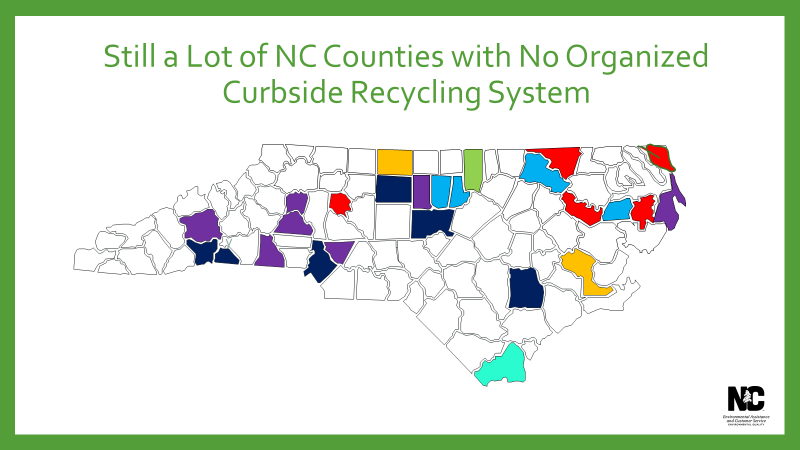
The counties which are not colored in on the map above, do not, to the best of our knowledge, have an organized system of curbside recycling service. Some of these uncolored cells include licensing systems that do not contain a recycling requirement in their provisions.
The above counties are just an example of some of what we think we know about gaps in service provision from the data I have gathered. You can see beside each county the number of unincorporated households. We believe that these households do not have access to curbside recycling service from any providers. A consequence of having an open market system in your county is that there may be no access to curbside recycling for your residents.
I hope that wasn’t too boring, and that maybe you learned something cool if you stuck through the whole thing. I’m happy to say that I’ve been offered a part time position here (at least through the Fall Semester), so although I won’t be blogging anymore, I’ll still be keeping up with Recycling and Materials Management in the state of North Carolina.
Thanks for reading and following along with me!
Tara


